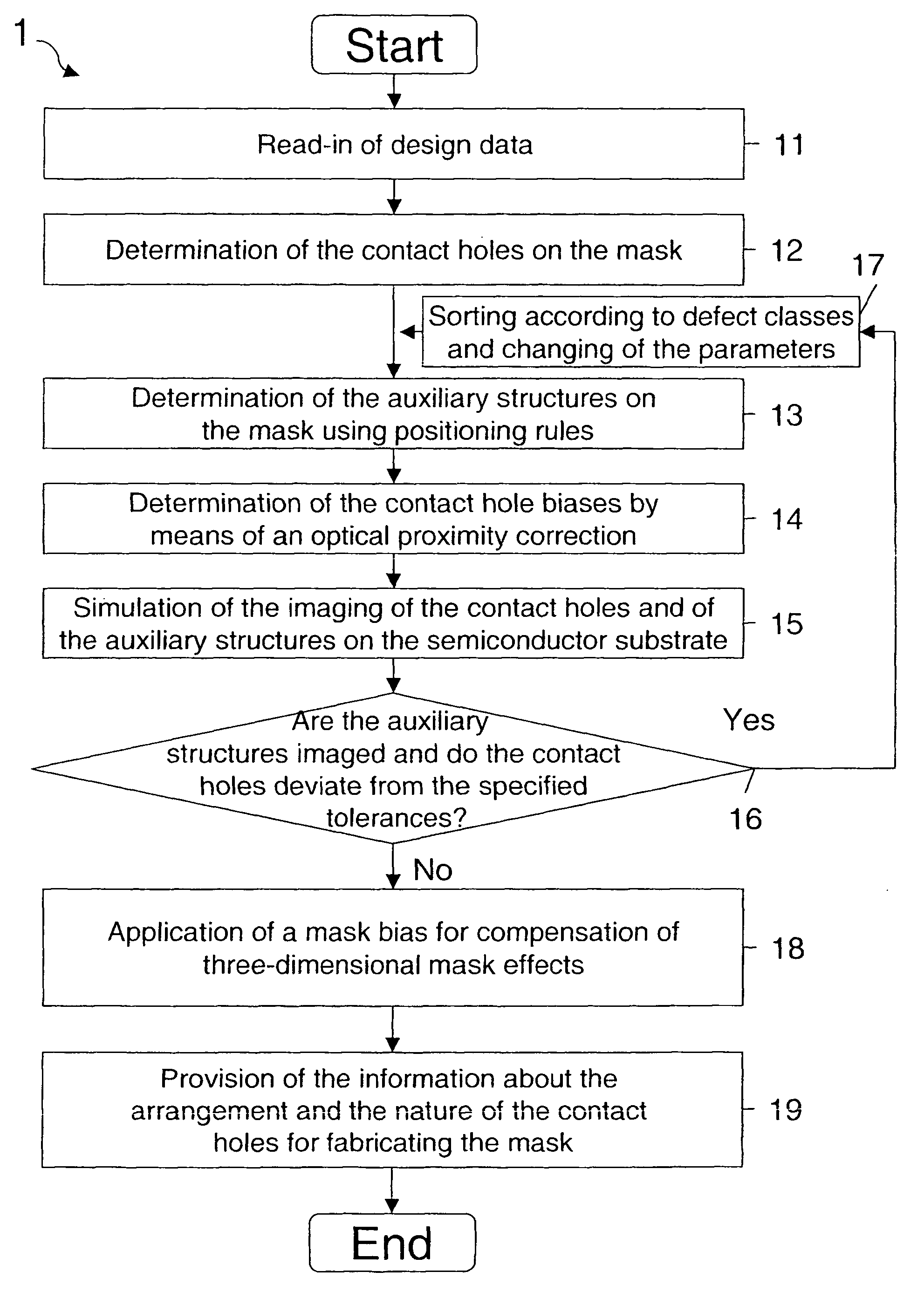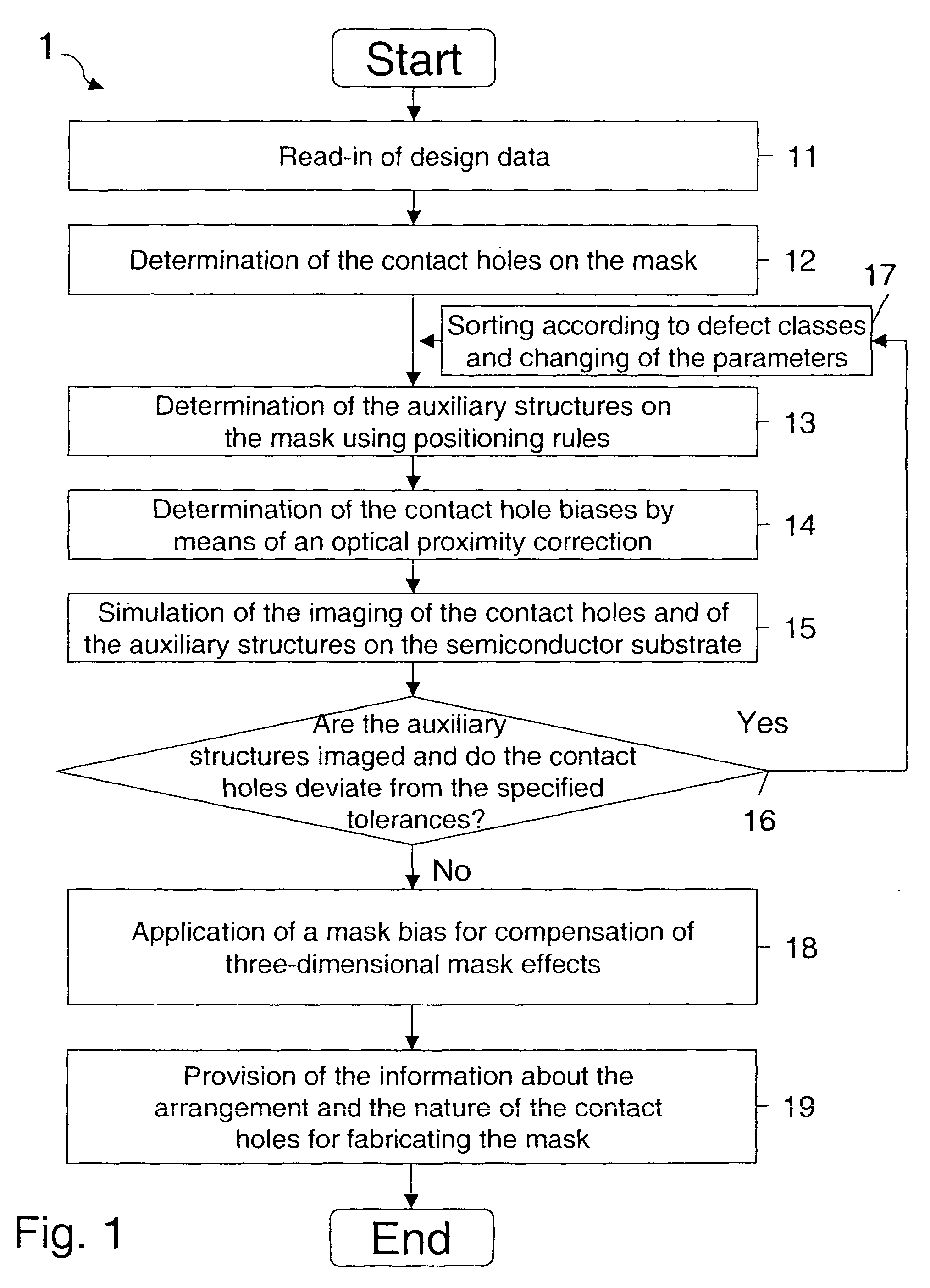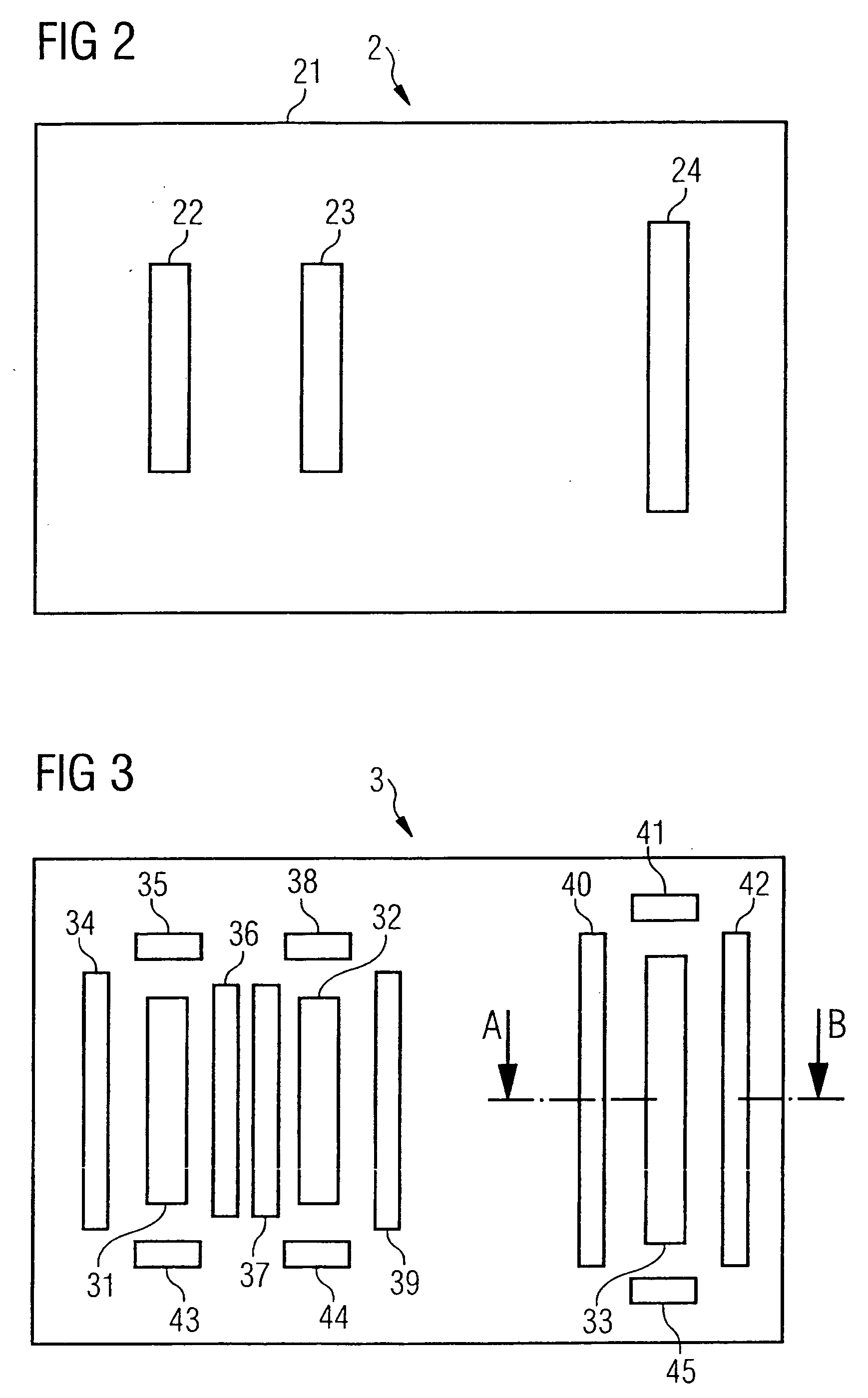Method for determining the construction of a mask for the micropatterning of semiconductor substrates by means of photolithography
a technology of semiconductor substrates and construction methods, applied in the field of determining the construction of masks by means of photolithography, can solve the problems of high computational complexity, difficult to develop new photolithography solutions, and masks with simple geometries can be analyzed in this way, and achieve the effect of precise determination of the construction of masks
- Summary
- Abstract
- Description
- Claims
- Application Information
AI Technical Summary
Benefits of technology
Problems solved by technology
Method used
Image
Examples
Embodiment Construction
[0075]FIG. 1 shows a first flow diagram 1 for illustrating the method steps 11 to 19 of a first method according to the invention for determining the construction of a mask.
[0076] In this case, the method steps 11 to 19 are carried out exclusively on a computer system that is not represented in FIG. 1. An image of a mask is created and optimized on the computer system below. In this case, mask image is understood to mean the description of the real mask by means of data, said description being created on the computer system.
[0077] In the first method step 11, design data are read into a main memory area of the computer system. In this case, the design data represent the surface structure to be produced on the semiconductor substrate, in particular on the semiconductor wafer. In this case, the design data comprise a plurality of planes, precisely one plane being selected for the method according to the invention. This plane is the contact plane of the semiconductor substrate. The c...
PUM
| Property | Measurement | Unit |
|---|---|---|
| refractive index | aaaaa | aaaaa |
| thickness | aaaaa | aaaaa |
| thickness | aaaaa | aaaaa |
Abstract
Description
Claims
Application Information
 Login to View More
Login to View More - R&D
- Intellectual Property
- Life Sciences
- Materials
- Tech Scout
- Unparalleled Data Quality
- Higher Quality Content
- 60% Fewer Hallucinations
Browse by: Latest US Patents, China's latest patents, Technical Efficacy Thesaurus, Application Domain, Technology Topic, Popular Technical Reports.
© 2025 PatSnap. All rights reserved.Legal|Privacy policy|Modern Slavery Act Transparency Statement|Sitemap|About US| Contact US: help@patsnap.com



